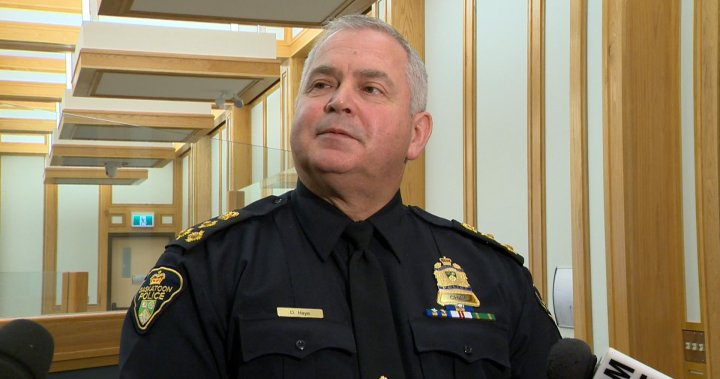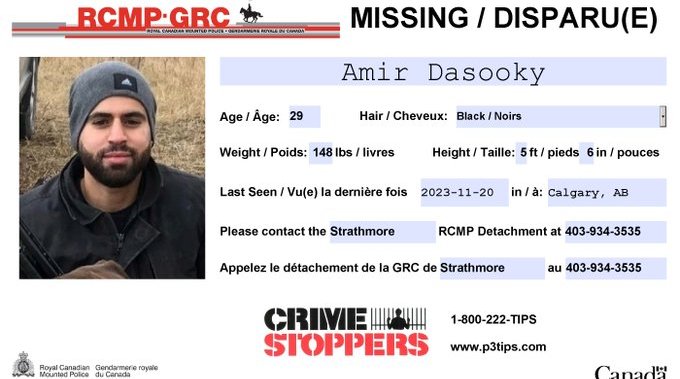A report revolving around homelessness and crime was brought forward to Saskatoon’s city council meeting Wednesday, which inadvertently turned into a message about the importance of reporting crimes.
Saskatoon Police Service interim chief Dave Haye said the police portion of the report is divided into two parts: the number of calls for service in areas like the Fairhaven community and the crime statistics.
He said statistics can’t capture the perception or belief within communities that they aren’t safe.
“In order to understand why a person doesn’t feel safe we have to speak with them directly and learn why they believe what they do,” Haye said.
He said while they’ve been able to connect with some business operators and residents, they haven’t been able to connect on a broader basis.
Haye said they are working with the fire department to find the best approach to that and believe that this requires a whole city approach.
He stressed that more transient people in the city doesn’t necessarily equate to more crime.
Saskatoon Tribal Council Chief Mark Arcand also spoke at the meeting, saying the report to council discredits the rumours about the Emergency Wellness Centre being the cause of crime rising 1,100 times in the Fairhaven community.
He said issues raised in some communities can be seen throughout the entire city and that the city needs to come together to address these issues.
Arcand said Saskatoon, being the largest city in the province, also has the most problems with homelessness, addictions and mental health issues.
“Dividing and conquering is not going to solve that issue,” Arcand said.
Coun. Darren Hill asked Arcand what happens to people who break the rules at the facility.
Arcand said if someone gets caught with drugs in the facility, police are notified. He also said some people who use the facility and break rules will voluntarily walk out and face bans from the facility with a sliding scale for how much time they are banned based on how many offences they’ve made.
The email you need for the day’s
top news stories from Canada and around the world.
He said transportation is offered to those who leave, but that’s only if they want it.
“We also do have a problem, sometimes the police do drop off individuals at our gate and leave.”
He said they’ve called that out when it happens and are working with community partners to improve things.
Robert Pearce, a resident in Fairhaven, said at the meeting that things were missing from the police and fire report.
He said he has stopped reporting most things to police he may have reported two years ago, adding that it takes up his time and he feels that nothing happens.
“I’m not alone in this,” Pearce said.
He said many other residents feel that it is a waste of time to report issues to police.
He said he now has to go home and double-check his locks because he feels that someone might walk into his home uninvited.
Pearce claimed that the Emergency Wellness Centre has caused more crime in the area. He claimed that the needs of the homeless population can’t be met at this shelter and that it needs to be removed. He added that solutions need to be found outside residential communities.
Haye took a moment to address Pearce’s comment about people in the community not reporting crimes to police.
“Because it appears that people are not reporting crime to police, all of our planning to this point has been based on what we know and those reported crimes,” Haye said.
He stressed the importance of reporting crimes to police, saying reporting things like suspicious persons or suspicious vehicle complaints can lead to officers intervening before a crime can be committed or suppressing or detecting a crime in the early stages.
Haye said they lay out options for reporting crime on their website.
He said the police service needs that data to be able to deploy officers and create budgets.
He said homelessness and shelter issues impact every area that police work in. Coun. Hilary Gough asked whether or not shelters were a driver of that strain, with Haye saying he felt shelters were needed.
Assistant fire chief Yvonne Raymer expanded on that, saying homelessness and shelters go hand in hand, and that shelters can help prevent some incidents.
“So our unhoused individuals are out in our community, they are in uncontrolled environments, they are taking measures into their own hands just to survive,” Raymer said.
She pointed to the 42 encampment-related fires seen in the city last year, saying they could have been prevented with a shelter.
City administration explained there were seven motions revolving around this topic at the Feb. 28 meeting that were carried, saying this was the first piece to offer some information and context to council.
It was noted that there was no exact timeline for public consultation around the police report, but administration speculated that options for that consultation could be six weeks to one month away from being brought forward.
Gough asked when the next discussion around future shelter sites was going to be, with administration saying the city is on the ground right now looking at roughly six possibilities that could be brought forward in May.
Coun. David Kirton asked the police chief if the statistics brought forward reflect the EWC’s change to turn away people with complex needs. Haye said the two changes to services that the Saskatoon Tribal Council made have had impacts on the calls for service in the community.
Coun. Troy Davies said he still sees issues in the community and asked what was being done to address this before they start accepting any more shelters in the city.
He said this was supposed to be a province-led project and foresaw increased budgets from the police and fire if there wasn’t a way forward.
City administration said proactive and reactive measures around these upcoming shelters are largely being covered by the city.
Haye noted that $200,000 was made available from the provincial government for alternative response officers.
Administration said that if city council wants the province to pitch in on services in the city as a result of these shelters, they would need that direction.
Coun. Randy Donauer asked if the city police had the resources they needed to deal with shelters.
Haye said they have some additional resources in place, using the additional alternative response officers that will be deployed in the near future as an example.




